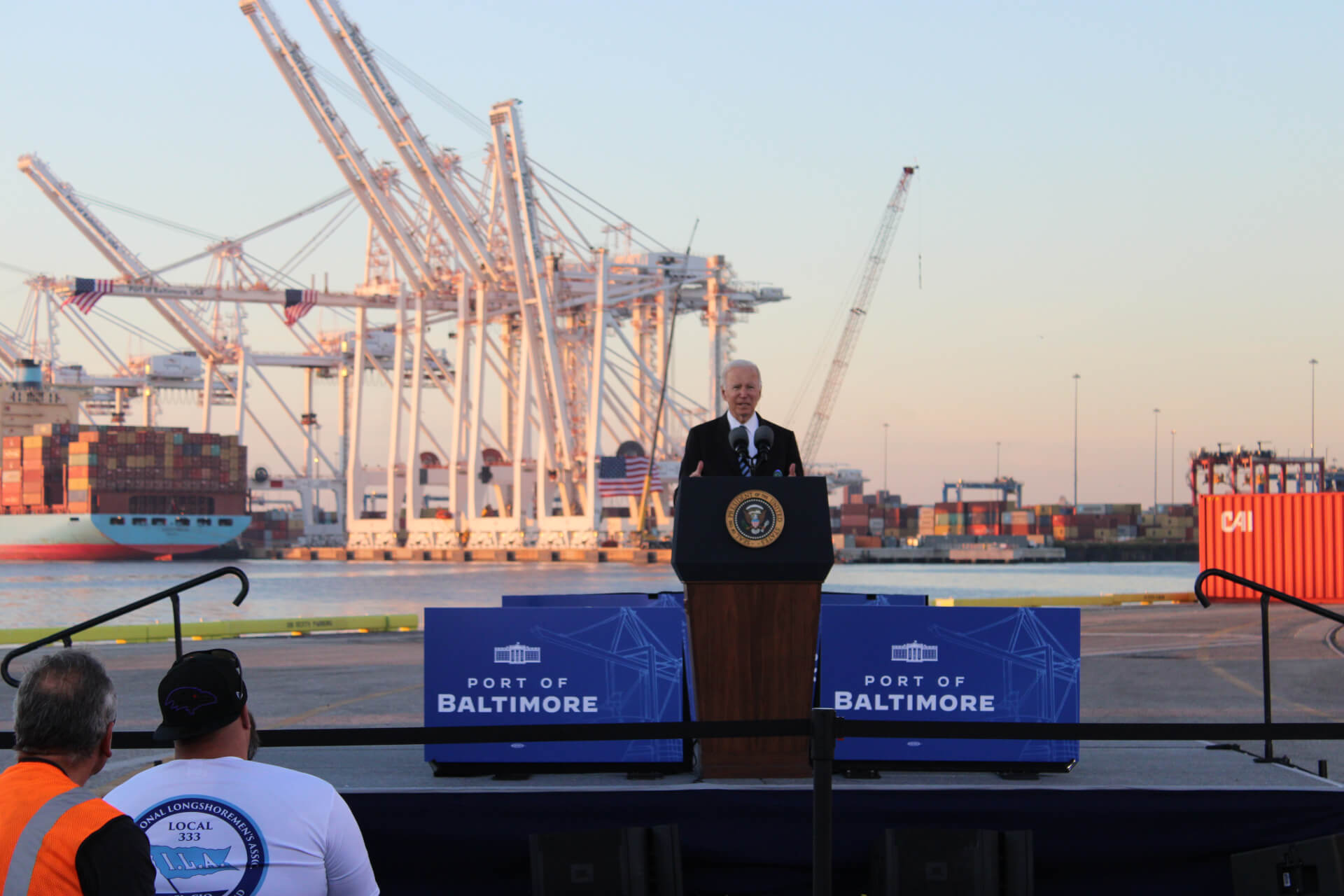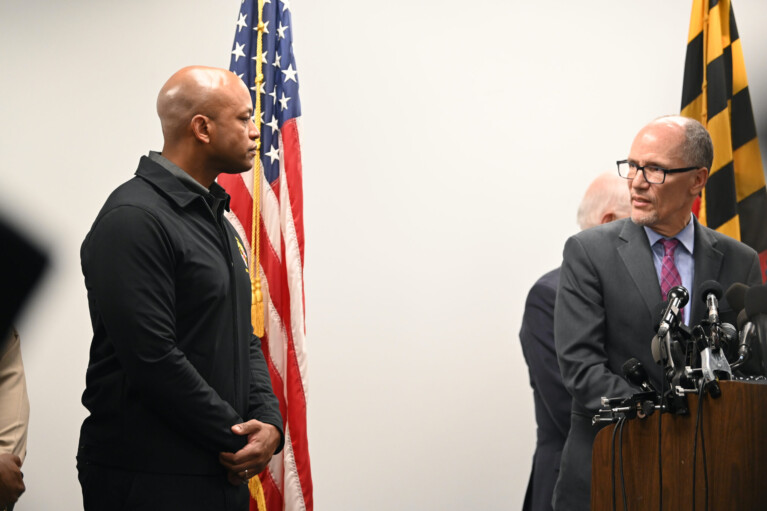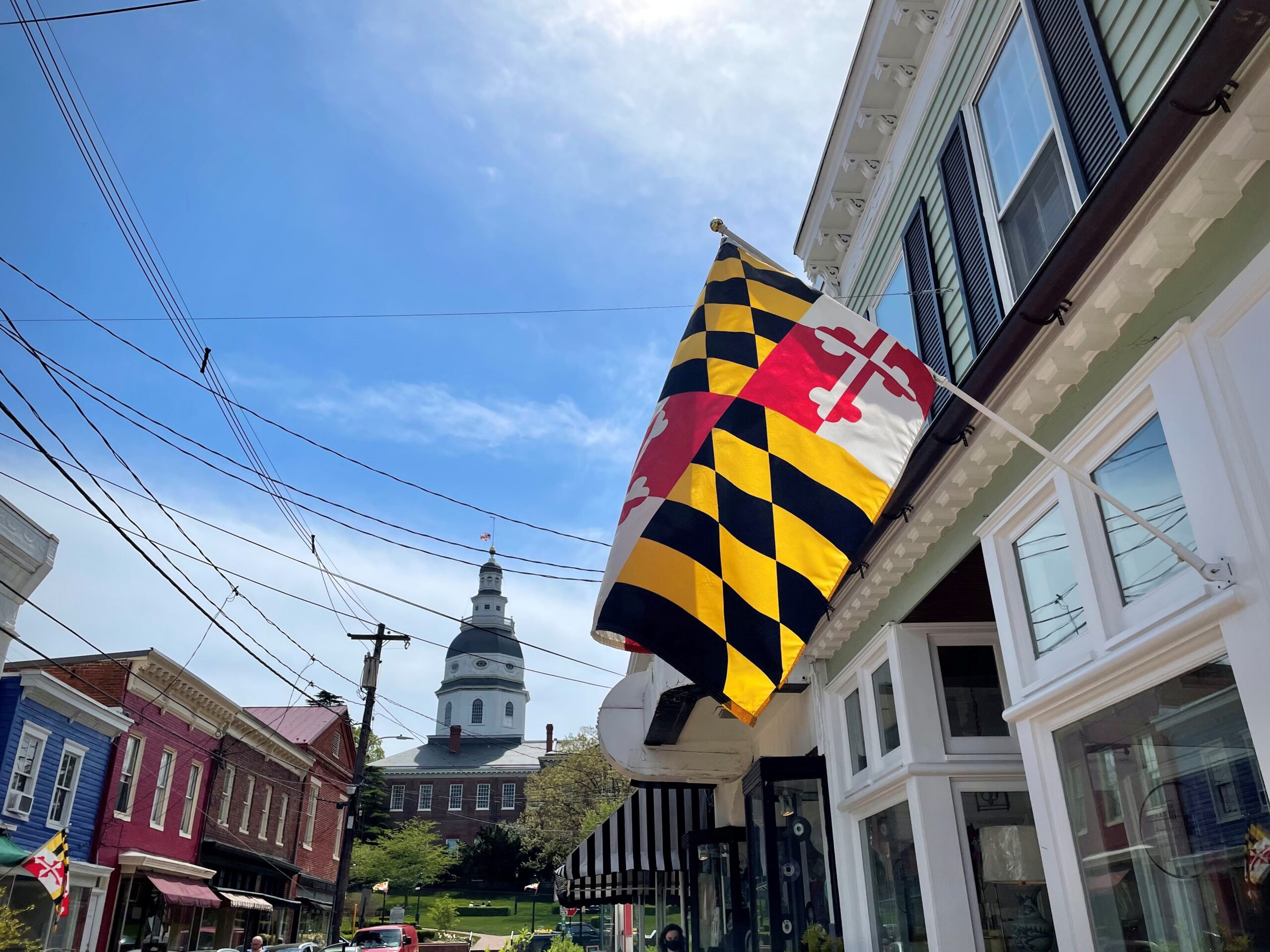Tom Perez: Some of Maryland’s Best Blue Collar Jobs are at the Port, and Now We Have an Opportunity to Create More

By Tom Perez
The writer, a former U.S. and Maryland labor secretary, is a 2022 Democratic candidate for governor.
This week, President Biden signed sweeping legislation to invest in and revamp our nation’s crumbling infrastructure into law. This marks the largest federal infrastructure investment since the Eisenhower Administration, and will help our country compete on a global scale. Last week, he visited the Port of Baltimore to discuss how this legislation will benefit Baltimore and every community across America.
President Biden chose the perfect location to celebrate this bill. The Port of Baltimore is an economic driver for Baltimore, for Maryland, and for the region. It creates jobs in every corner of Maryland, from warehousing workers and truck drivers in Cumberland to poultry processors in Salisbury. It’s a supply chain hub that moves goods nationwide, and it’s Maryland’s gateway to the rest of the world.
Maryland will see $6 billion in federal dollars from the infrastructure legislation, including a significant investment in port infrastructure and intermodal freight transportation. In the wake of economic and supply chain disruptions of COVID-19, the East Coast is emerging as an equal to the West Coast in goods distribution. The Port of Baltimore is closer to the Midwest than any other East Coast port and is within an overnight drive of one-third of the nation’s population. This moment presents a once-in-a-generation opportunity to build the Port of Baltimore back better by creating good-paying jobs, retaining those jobs, and investing in workforce development.
It’s not just an opportunity — it’s an imperative. The pandemic has changed how we behave as consumers. We’re buying more, so much so that goods movement to the United States is up 19%, and it’s not expected to decrease. We have to increase Port capacity to meet the demand, and that starts with investing in new energy efficient technology.
These new technologies, including updated container cranes, innovative new weighing and inspection mechanisms, expanded 5G, and improved data-sharing, will not only expand Port capacity; they will create jobs. These jobs would be good-paying, family-supporting, union jobs that don’t require a college degree and allow workers to punch their ticket to the middle class. This is possible through a no net jobs loss pledge — companies, unions, local and state leaders coming together to ensure that port modernization expands economic opportunity and does not displace workers.
In 2015, we were facing one of the worst supply chain challenges in 30 years on the West Coast. A cargo backlog developed during the contentious dock worker contract negotiations between the International Longshore (ILWU) and their employers. I was serving as the U.S. Secretary of Labor at the time, and President Obama asked me to step in and help negotiate the ILWU contract. The settlement we reached was win-win-win; a win for the workers, a win for the companies, and a win for the consumer. In fact, it was so much so that the parties agreed to extend the contract a few years later. We got it done then, and we must do it again here in Baltimore.
It’s also critical that we not only create and retain jobs; we must also strengthen our existing workforce. We can start by ensuring that Port jobs are accessible to ALL Marylanders, and there are several ways we can accomplish this.
Let’s start with justice-involved individuals. To work at a port, an individual must obtain a Transportation Worker Identification Credential (TWIC), and although those with criminal records are not automatically prohibited from obtaining a TWIC, many are deterred from applying or denied. Applicants that are denied the federal credential can seek an exemption, but most do not due to a lack of legal acumen and resources. Maryland should provide direct assistance to applicants who wish to apply for a TWIC card or appeal the denial of a TWIC card.
Now let’s take a look at Baltimore’s job market. Recent data shows that “25% of the city’s positions are vacant, which amounts to 3,437 unfilled employee positions,” and many of these positions are at the Port. Oftentimes, these positions sit vacant because the skillset of the workforce doesn’t line up with the qualifications required for the job. Investing and expanding apprenticeship programs would fill that gap, and we can do it by requiring project labor agreements and community benefit agreements that promote local hiring and target disadvantaged groups in the labor market.
President Biden’s visit highlighted the tremendous impacts that this legislation will have on the Port, our state, and our country. Now, it’s our responsibility to capitalize on this moment and create a stronger Port for the betterment of our entire state.




 Creative Commons Attribution
Creative Commons Attribution